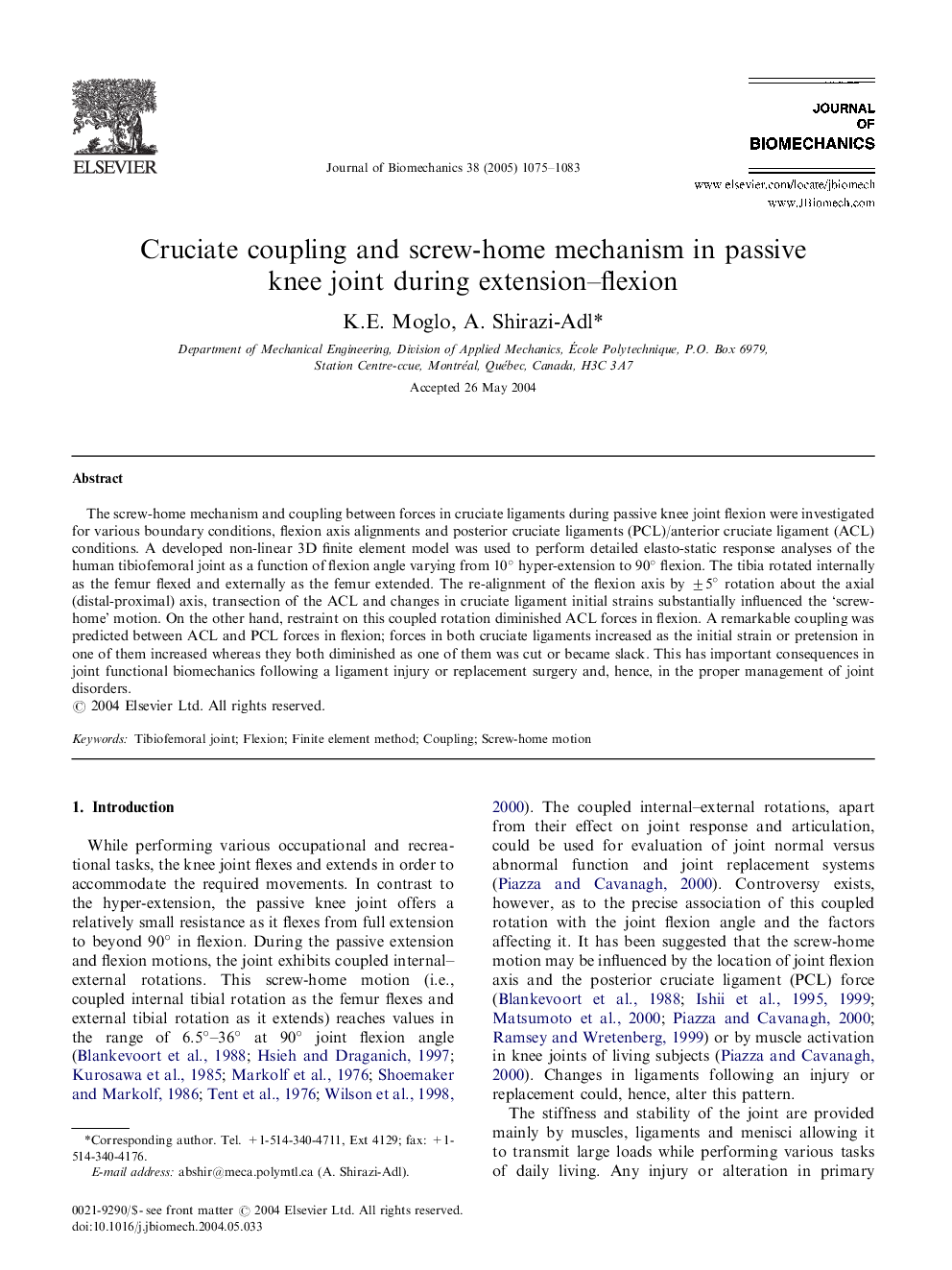| Article ID | Journal | Published Year | Pages | File Type |
|---|---|---|---|---|
| 10433819 | Journal of Biomechanics | 2005 | 9 Pages |
Abstract
The screw-home mechanism and coupling between forces in cruciate ligaments during passive knee joint flexion were investigated for various boundary conditions, flexion axis alignments and posterior cruciate ligaments (PCL)/anterior cruciate ligament (ACL) conditions. A developed non-linear 3D finite element model was used to perform detailed elasto-static response analyses of the human tibiofemoral joint as a function of flexion angle varying from 10° hyper-extension to 90° flexion. The tibia rotated internally as the femur flexed and externally as the femur extended. The re-alignment of the flexion axis by ±5° rotation about the axial (distal-proximal) axis, transection of the ACL and changes in cruciate ligament initial strains substantially influenced the 'screw-home' motion. On the other hand, restraint on this coupled rotation diminished ACL forces in flexion. A remarkable coupling was predicted between ACL and PCL forces in flexion; forces in both cruciate ligaments increased as the initial strain or pretension in one of them increased whereas they both diminished as one of them was cut or became slack. This has important consequences in joint functional biomechanics following a ligament injury or replacement surgery and, hence, in the proper management of joint disorders.
Related Topics
Physical Sciences and Engineering
Engineering
Biomedical Engineering
Authors
K.E. Moglo, A. Shirazi-Adl,
